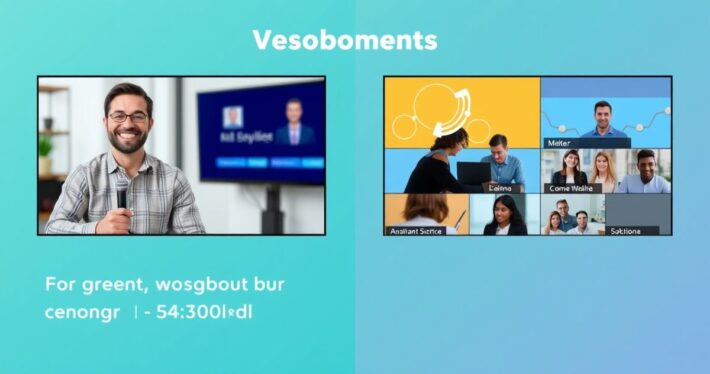How to scale webinar promotions across borders and cultures.

The Ultimate Guide to Scaling Webinar Promotions Across Borders and Cultures
Hosting webinars is one of the most effective ways to build authority, engage audiences, and drive conversions. But what happens when you want to take your webinar promotions global? Scaling across borders and cultures isn’t as simple as translating your content and hitting “publish.” You’ll need to navigate cultural nuances, time zones, and audience expectations to ensure your webinar resonates no matter where it’s viewed.
Let’s dive into the strategies and tools that can help you scale your webinar promotions successfully—without losing your sanity or your message.
Why Global Webinar Promotions Are Worth the Effort
Before we get into the “how,” let’s address the “why.” Why should you bother scaling your webinar promotions internationally?
Simply put, the global market is massive, and webinars are a cost-effective way to tap into it. Whether you’re targeting North America, Europe, Asia, or beyond, webinars allow you to connect with diverse audiences in real-time. They also offer flexibility—you can host live sessions, pre-record content, or create hybrid events tailored to different regions.
But here’s the catch: what works in one country might fall flat in another. Cultural differences, language barriers, and even differing internet speeds can impact the success of your webinar. So, how do you scale promotions effectively? Let’s break it down.
Step 1: Understand Your Target Audience’s Cultural Nuances
You can’t promote a webinar effectively if you don’t understand your audience. This is especially true when targeting international markets. Cultural norms, communication styles, and even humor vary widely across regions.
For example:
- In Japan, professionalism and formality are highly valued—so a casual tone might not resonate.
- In Brazil, audience interaction and emotional storytelling often drive engagement.
- In Germany, data-driven content and clear, concise messaging tend to perform best.
Take the time to research your target audience’s preferences. Talk to local marketers, conduct surveys, or even hire cultural consultants to ensure your messaging aligns with their expectations.
Step 2: Localize Your Content, Don’t Just Translate
Translation is a starting point, but localization is where the magic happens. Localization involves adapting your content to fit the cultural, linguistic, and social context of your audience.
Here’s how to do it:
- Use native speakers to translate and refine your webinar scripts, slides, and promotional materials.
- Adapt visuals to include culturally relevant imagery (e.g., avoid symbols or gestures that might be misinterpreted).
- Modify examples or case studies to reflect local experiences.
Real-World Example: A SaaS company promoting a webinar in France found that simply translating their English content didn’t resonate. They localized their materials by incorporating French idioms, using local success stories, and adjusting the webinar timing to suit Parisian business hours. The result? A 40% increase in registrations compared to their standard approach.
Step 3: Optimize for Time Zones and Scheduling
One of the biggest challenges of global webinar promotions is timing. What’s convenient for you might be the middle of the night for someone else.
Here’s how to tackle this:
- Use tools like World Time Buddy to find overlapping time zones.
- Offer multiple webinar times to accommodate different regions.
- Record your sessions and offer on-demand access for those who can’t attend live.
Pro Tip: If you’re targeting a specific region, promote your webinar during their peak engagement hours. For example, email campaigns sent in the morning local time tend to perform better in Europe, while evening promotions are more effective in Asia.
Step 4: Leverage Localized Influencers and Partners
Partnering with local influencers or industry leaders can amplify your webinar promotions. These individuals already have credibility and a following in your target region, making it easier to build trust and drive registrations.
How to Find the Right Partners:
- Look for influencers who align with your brand values and audience demographics.
- Collaborate on co-branded promotions, such as guest webinar appearances or social media shoutouts.
- Use tools like BuzzSumo or HypeAuditor to identify potential partners in your target market.
Step 5: Adapt Your Promotional Channels
Different regions favor different platforms. While LinkedIn might be your go-to for B2B promotions in the U.S., platforms like WeChat (China) or Line (Japan) could be more effective elsewhere.
Here’s a quick breakdown:
- North America: LinkedIn, Facebook, email marketing.
- Europe: LinkedIn, Twitter, localized email campaigns.
- Asia: WeChat, LINE, KakaoTalk, and region-specific forums.
Tailor your promotional strategy to the platforms your audience uses most. And don’t forget to adapt your messaging to suit each platform’s tone and style.
Step 6: Test, Measure, and Optimize
Scaling webinar promotions across borders is an iterative process. What works for one region might not work for another—or it might need tweaking.
Use analytics tools to track key metrics like:
- Registration rates by region.
- Attendance rates and webinar drop-off points.
- Post-webinar engagement (e.g., Q&A participation, survey responses).
Based on your data, refine your approach. For example, if you notice low attendance in a specific region, try adjusting the webinar time or offering a recording with subtitles.
Final Thoughts: Start Small, Think Big
Scaling webinar promotions across borders and cultures can feel overwhelming, but it doesn’t have to be. Start by targeting one or two regions, test your strategies, and build from there.
Remember, the key to success lies in understanding your audience, localizing your content, and being flexible in your approach. With the right tools and tactics, you can create webinars that resonate globally—and drive results no matter where your audience is located.
Now, here’s a question for you: What’s one cultural nuance you’ve encountered in your own marketing efforts—and how did you adapt? Share your thoughts in the comments below!



